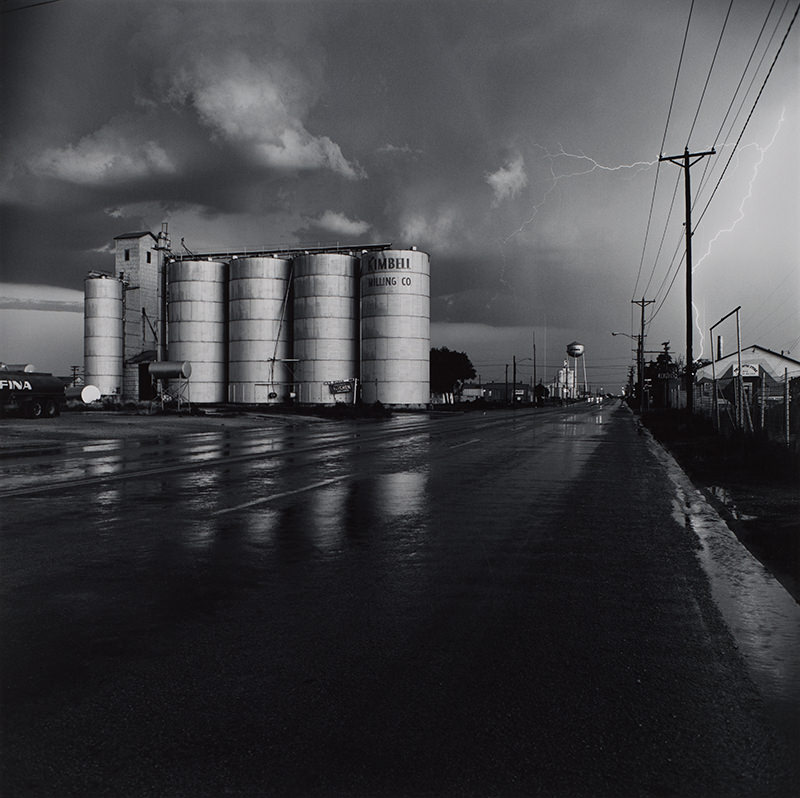Sheldon Museum of Art Main Content
Exhibition
Landscape—Grain Elevator and Lightning Flash, Lamesa, Texas
Selected by Carrie Morgan
Curator of Academic Programs
Sheldon Museum of Art
What makes a place? Is it the particular flora and fauna, land features, bodies of water, the weather—what we might more generically refer to as the topography and nature? Or, is it the people who inhabit, revere, develop, destroy, and otherwise mark the landscape—what is studied as cultural geography or the cultural landscape?
The answer to this question, the question itself for that matter, is probably more complex than what I am getting at here. Nevertheless, it is the idea of place that I find most compelling about the work of American landscape photographer Frank Gohlke. I’ve been interested in the cultural landscape ever since I took a class with a student of the geographer and cultural historian J. B. (John Brinckerhoff “Brinck”) Jackson (1909–1996). Jackson studied vernacular landscapes and both wrote and lectured on the social dynamics that shape the environment, that create places. His legacy informs how I regard parks to be more than simply sites of natural beauty, storefronts as not just frames for displaying goods, street grids as systems that move more than traffic. Each of these features in the landscape is a place created by people to negotiate cultural meaning and relations.
It would be remiss of me to not also confess that I’m drawn to Gohlke’s sharp, precise rendering of textures, surfaces, forms, and light—and in this photograph, the vantage point. Being a native of the Midwest, I know places like this. I’ve experienced them much like Gohlke has presented this Texan landscape: from the road, watching tall elevator towers gradually rise above the flat landscape as I approach and then fall back into the horizon as I drive past and look into the rearview mirror.
